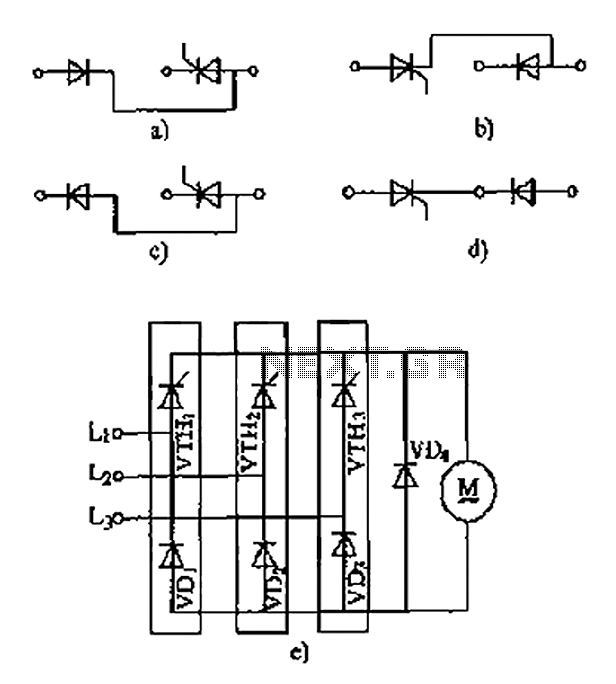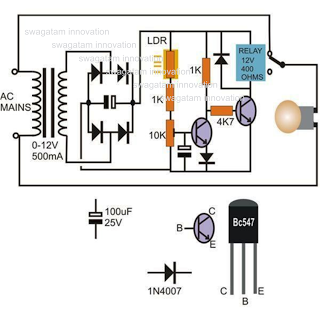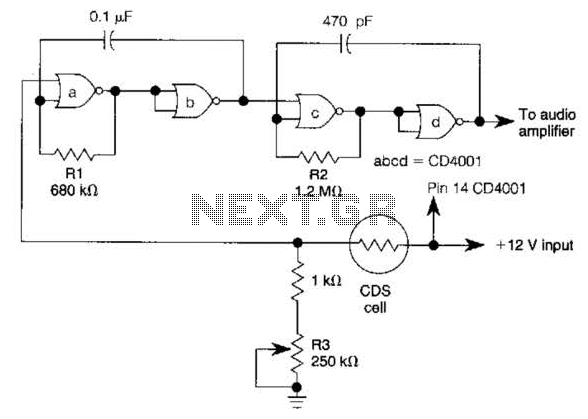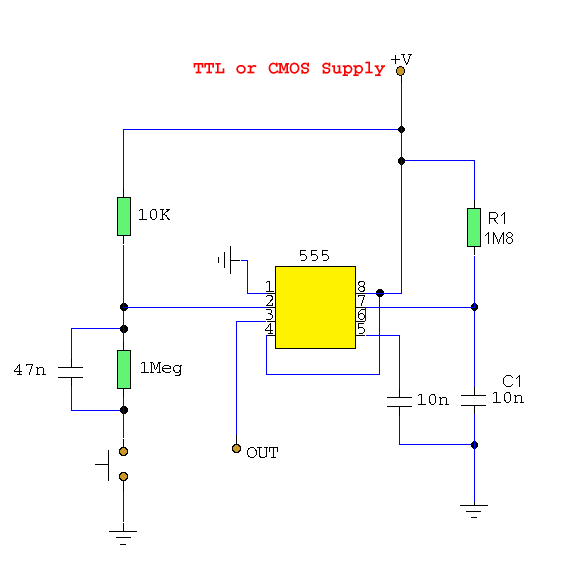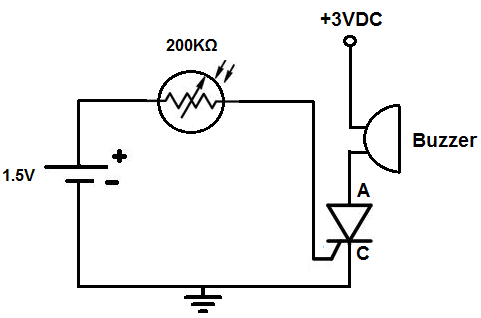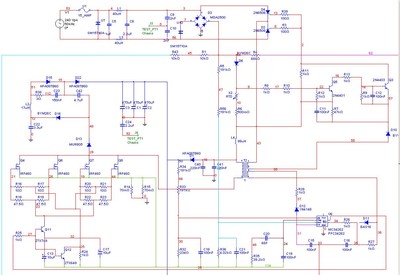
Battery charger circuit using L200
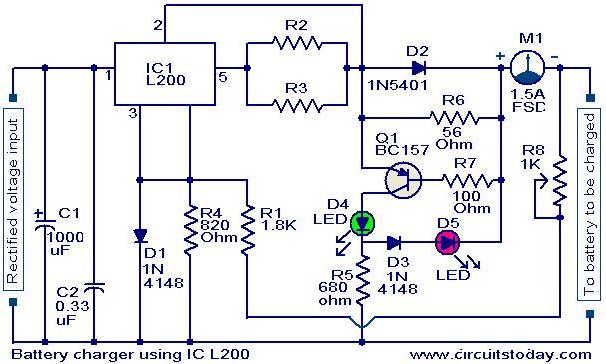
A simple battery charger circuit with reverse polarity indication is presented here. The circuit utilizes the L200 integrated circuit (IC), which is a five-pin variable voltage regulator. The charging circuit can be powered by DC voltage from either a bridge rectifier or a center-tapped rectifier. The L200 IC maintains a constant charging voltage. The charging current is regulated by the parallel combination of resistors R2 and R3. A potentiometer (P1) is included to allow for adjustment of the charging current. This circuit is specifically designed to charge a 12 V lead-acid battery. A transistor (T1), diode (D3), and LED are incorporated to create a reverse polarity indicator. If the battery is connected with reverse polarity, the red LED (D5) lights up. During the charging process, the green LED (D4) serves as a battery charging indicator.
The battery charger circuit described employs the L200 voltage regulator, which is notable for its ability to provide a stable output voltage, essential for safely charging lead-acid batteries. The circuit configuration allows it to be powered from a DC source, typically provided by a rectifier setup that converts AC to DC voltage.
To optimize the charging process, the resistors R2 and R3 are chosen to set the desired charging current, which is critical for the longevity and health of the battery being charged. The use of a potentiometer (P1) allows for fine-tuning of this current, accommodating variations in battery condition and ensuring that the charging process is efficient and safe.
The inclusion of a reverse polarity protection mechanism is a significant safety feature. The circuit utilizes a transistor (T1) and a diode (D3) in conjunction with two LEDs (D4 and D5) to provide visual indicators of the charging status. The green LED (D4) illuminates when the battery is charging correctly, while the red LED (D5) serves as an alert if the battery is connected in the wrong orientation. This feature prevents potential damage to the battery and the circuit itself due to incorrect connections.
Overall, this battery charger circuit is designed with user safety and operational reliability in mind, making it suitable for charging 12 V lead-acid batteries in various applications. Proper selection of components and careful attention to circuit design principles ensure that the charger operates effectively within its intended parameters.A very simple battery charger circuit having reverse polarity indication is shown here. The circuit is based on IC L200. L200 is a five pin variable voltage voltage regulator IC. The charging circuit can be fed by the DC voltage from a bridge rectifier or center tapped rectifier. Here the IC L200 keeps the charging voltage constant. The charging curr ent is controlled by the parallel combination of the resistors R2 & R3. The POT P1 can be used to adjust the charging current. This circuit is designed to charge a 12 V lead acid battery. The transistor t1, diode D3 and LED are used to make a battery reverse indicator. In case the battery is connected in reverse polarity, the reverse polarity indicator red LED D5 glows. When the charging process is going on the battery charging indicator green LED D4 glows. 🔗 External reference
The battery charger circuit described employs the L200 voltage regulator, which is notable for its ability to provide a stable output voltage, essential for safely charging lead-acid batteries. The circuit configuration allows it to be powered from a DC source, typically provided by a rectifier setup that converts AC to DC voltage.
To optimize the charging process, the resistors R2 and R3 are chosen to set the desired charging current, which is critical for the longevity and health of the battery being charged. The use of a potentiometer (P1) allows for fine-tuning of this current, accommodating variations in battery condition and ensuring that the charging process is efficient and safe.
The inclusion of a reverse polarity protection mechanism is a significant safety feature. The circuit utilizes a transistor (T1) and a diode (D3) in conjunction with two LEDs (D4 and D5) to provide visual indicators of the charging status. The green LED (D4) illuminates when the battery is charging correctly, while the red LED (D5) serves as an alert if the battery is connected in the wrong orientation. This feature prevents potential damage to the battery and the circuit itself due to incorrect connections.
Overall, this battery charger circuit is designed with user safety and operational reliability in mind, making it suitable for charging 12 V lead-acid batteries in various applications. Proper selection of components and careful attention to circuit design principles ensure that the charger operates effectively within its intended parameters.A very simple battery charger circuit having reverse polarity indication is shown here. The circuit is based on IC L200. L200 is a five pin variable voltage voltage regulator IC. The charging circuit can be fed by the DC voltage from a bridge rectifier or center tapped rectifier. Here the IC L200 keeps the charging voltage constant. The charging curr ent is controlled by the parallel combination of the resistors R2 & R3. The POT P1 can be used to adjust the charging current. This circuit is designed to charge a 12 V lead acid battery. The transistor t1, diode D3 and LED are used to make a battery reverse indicator. In case the battery is connected in reverse polarity, the reverse polarity indicator red LED D5 glows. When the charging process is going on the battery charging indicator green LED D4 glows. 🔗 External reference
